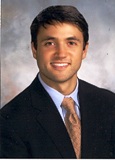Medical Student Perspectives: Global Brought Local Health
The father wore cowboy boots, faded jeans, and a navy polo shirt; a trinket attached to a leather bracelet dangled from his wrist. The mother, in gray sweatpants and a black t-shirt, had long dark hair that matched her darker complexion. With them were their four daughters. Walking into the clinic room, I found the three older daughters laughing, shouting, and jumping around two chairs and the exam table as their father pleaded with them to calm down. Their three-month-old sister, my patient that morning, was cradled in her mother's arms. What made this family different from all the other patients I had seen that week was that they were speaking Spanish and had emigrated from Guatemala.
I was in Southwest Virginia, completing my pediatric rotation as a third-year medical student. Spanish-speaking patients account for just six percent of the persons living in this region, best known for its coal-mining and its population of long-settled Scots-Irish. Somewhat surprisingly, I had seen quite a few Hispanic patients here in Appalachia, evidence that the demography of this mountainous region is changing. Very few physicians in the area spoke Spanish, and I was pleased that I would be able to communicate with this family because I had learned some Spanish during the months I spent in Guatemala between my first and second years of medical school.
I was sitting in the physician's office when the Guatemalan family pulled into the parking lot. From the window I watched the girls and their parents get out of their truck and start toward the clinic door. "Can you believe how many people they can fit in one car? It really is true, isn't it, how Mexicans just pile people into a vehicle!" I turned around to discover one of the nurses in the office doorway. She'd noticed this family, too, and was eying them with a mix of curiosity and suspicion. I was shocked at her derisive words, too shocked to reply.
I immediately volunteered to see the family, not actually Mexican but Guatemalan. I said, "hello" to the parents and the girls in Spanish, then asked the oldest girl how old she was. Nine, she said. "Ah, muy bien, muy bien," I replied. I frequently have conversations with a classmate about whether it is rude to automatically speak Spanish to someone who actually might speak English. I decided on this occasion to continue with Spanish unless the parents indicated they preferred to speak English.
From the electronic medical record, I saw that my patient was a healthy three-month-old girl who had been having two days of diarrhea. In my mind I formed a differential diagnosis and list of questions that could help me settle on the diagnosis. I started with open-ended questions and progressively narrowed my focus. Only at the end of our discussion though, did he tell me what he thought was going on with his daughter: "mal de ojo," or evil eye. I remembered learning about mal de ojo during my first trip to Guatemala, the summer between my first and second years of medical school. Mal de ojo can be contracted when someone casts a hex by gazing upon another person with envy or desire. Babies and young children are thought to be especially vulnerable, so much so in fact that to prevent this type of gaze from reaching a baby, many women will carry their infant on their backs and completely cover the child with cloth.
The father's story was classic for mal de ojo. A few days before, when he and his wife were walking the baby outdoors, a neighbor had stared at the little girl in her stroller. When I first heard about mal de ojo, I was surprised to learn that the condition can be avoided if the person gazing at the child also touches the child's head. I recall thinking how upset most American parents would be if a stranger admiring their baby started touching the baby's head!
I noticed again the father's bracelet and recognized it as a traditional talisman meant to ward off evil spirits. While I did not specifically acknowledge the talisman, I did explain to him that I was familiar with mal de ojo and would mention it to the physician before he examined the baby.
In the end, the doctor's exam and treatment plan remained fully grounded in Western medicine and did not address spiritual concerns. Still, it seemed that my having acknowledged the father's explanation for his daughter's illness fostered some trust. It may even have been comforting, helping the family to feel more at home in Appalachia and in our medical system.
In this small way, I brought global health to a local medical practice in Southwest Virginia, where new Spanish-speaking immigrants may not be accustomed to being treated by doctors who speak their language or understand some of their customs. Medical students who choose to participate in global health electives may not only care for patients abroad but also provide comfort and cultural competency to patients in the US.
|
|
Jonathan Abelson, MD |


